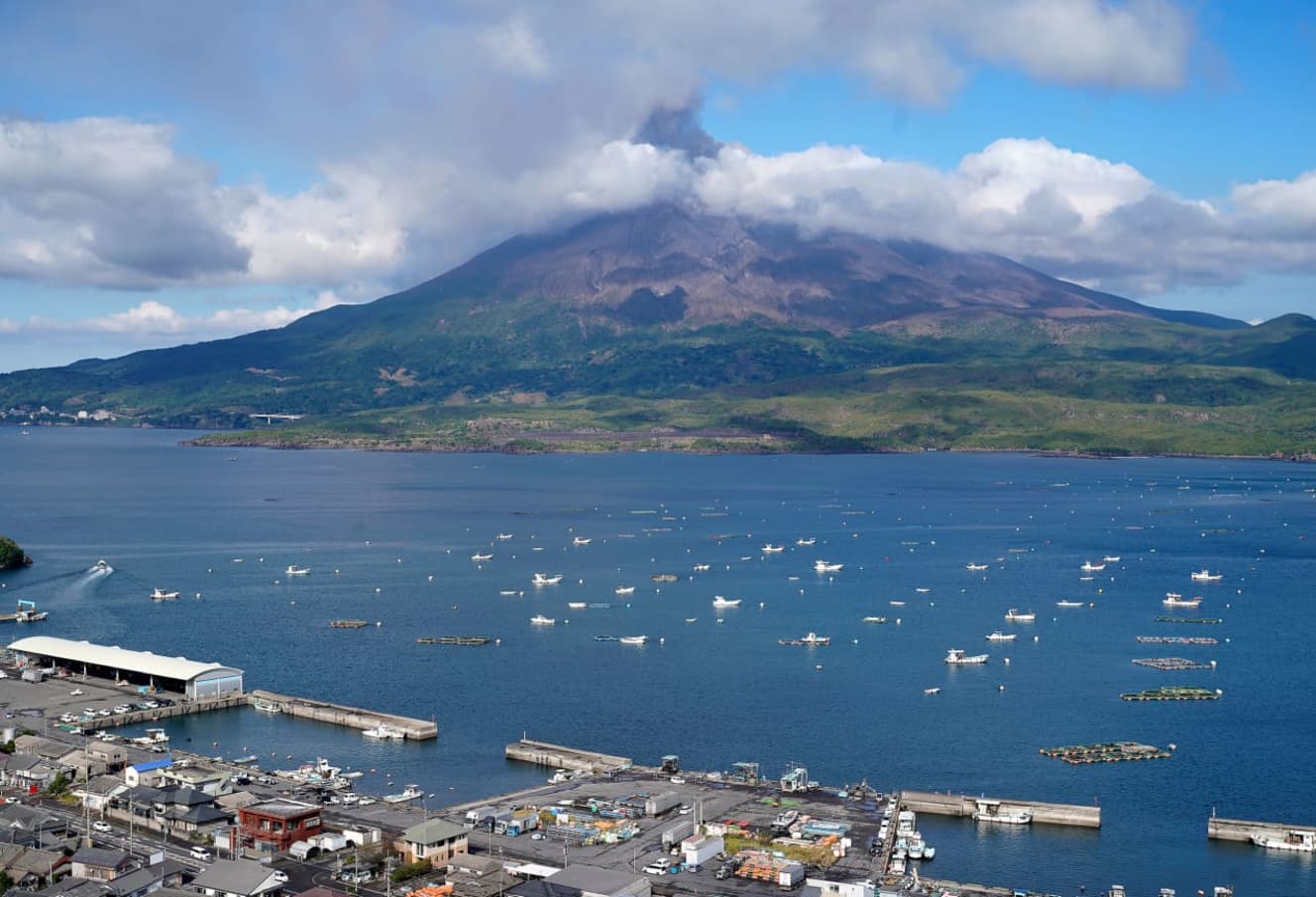4,000″ fish escaped from farmed fish ponds! Massive Outbreak of Kue-tama Causing Chaos in Kagoshima Bay
Giant Artificial Fish Made by Crossing "Kue" and "Tamakai" - Very Popular at Sushiro!
Shinichi Dewa, 53, an underwater photographer who has been diving in Kagoshima Bay for 34 years, says, “Artificial giant fish that should not exist in the natural world” have been appearing in large numbers in Kagoshima Bay.
One time, when I was taking underwater photographs, I saw a speckled fish about 30 cm in length, which I had never seen before, swimming in the water. Reports of sightings of the same fish kept coming in from anglers and fishermen. As far as I know, it has been found in more than 10 locations in Kagoshima Bay. This was a fish called Kuetama.

The kuetama is an artificial crossbred fish created by crossing a kuei, a high-end fish, with a tamakai, the world’s largest grouper. Developed at Kinki University in 2011, the fish has been cultivated to combine the taste of kue with the texture of tamakai, and last year it appeared at Sushiro, where it has been gaining popularity.
Why is Kagoshima Bay full of this fish, which should normally be found only in fish ponds? An official with the Tarumizu Fisheries Cooperative Association, which manages the bay, said, “We have heard that kuetama are being caught,” but the cause has not yet been determined. However, a fisheries official with knowledge of the situation revealed in a hushed voice, “The reason for the problem is not clear.
A typhoon around 2006 destroyed a casserole containing 3,000 to 4,000 kuetama, and it is rumored that the kuetama escaped into Kagoshima Bay. Since aquaculture does not require notification to the fisheries cooperative, etc., and there is no need to report the escape, the “culprit” is not known. However, some people have witnessed large numbers of 20-cm kuetama in the shallows.
The kuetama released into the ocean are believed to be growing at a breakneck pace, and while they were 30-40 cm in size around 19, they are now 70-80 cm in length. Since such a huge fish is almost non-existent in Kagoshima Bay, anglers and fishermen have recently been making a big fuss about it. Professor Nobuhiko Akiyama of the Department of Fisheries at Tokai University’s Faculty of Oceanography sounds the alarm over the current situation.
The kuetama is large and carnivorous, so it eats fish and crustaceans that originally inhabit the natural world. The oceans are large, but if they were to appear locally in large numbers in the natural world, the balance of the ecosystem could be upset.
Currently, the adult kuetama being bred for research at Kinki University are about 1 meter long and weigh up to 30 kilograms. If left unchecked, the impact would be immeasurable.

From the March17, 2023issue ofFRIDAY
PHOTO: Courtesy of "Suichannel" (Kuetama) Jiji Press